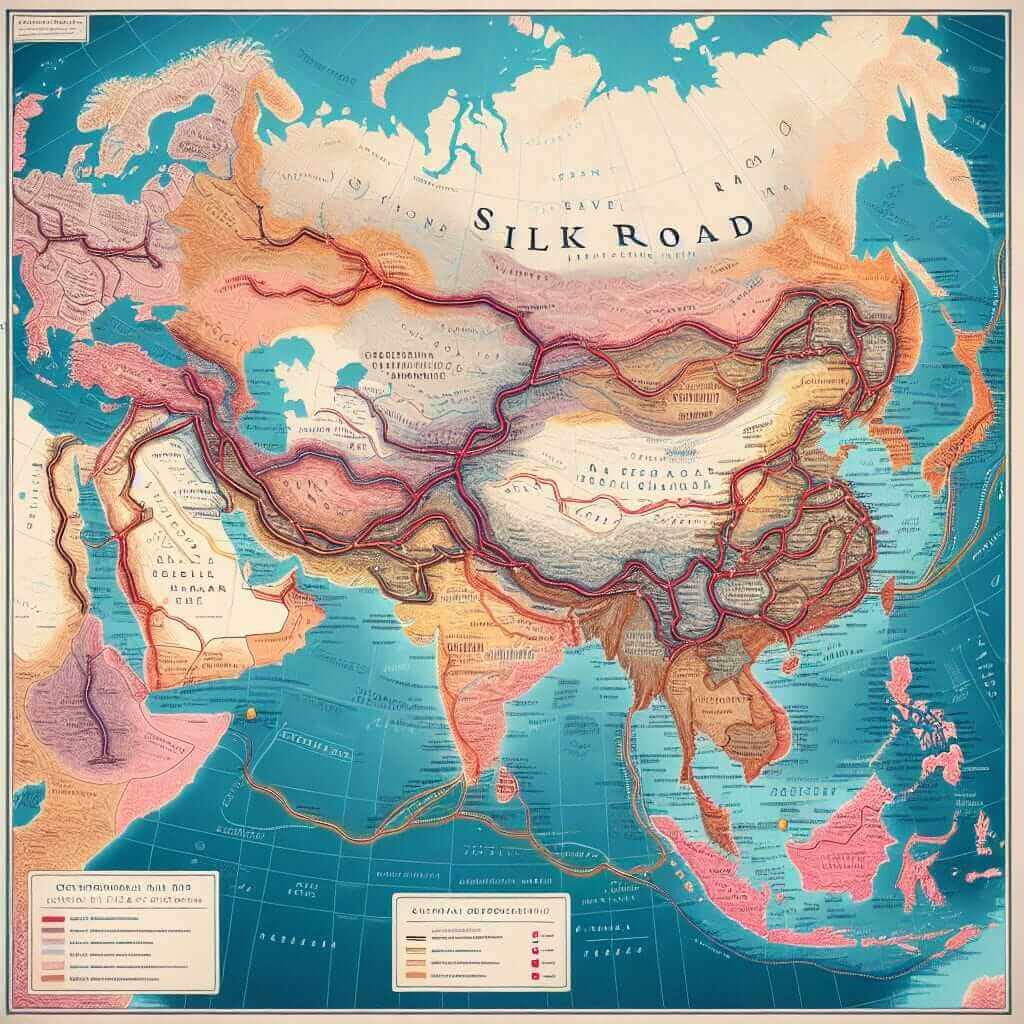The IELTS Reading section is integral to the IELTS test, evaluating your ability to comprehend passages of varying difficulty and answer questions based on the text provided. “Cultural impacts of global trade” is a prevalent topic that has appeared in past tests and remains relevant due to its timely and timeless significance. Here, we’ll explore how this subject fits within the IELTS Reading test and help you prepare for similar future questions.
Nội dung bài viết
Reading Passage: Cultural Impacts of Global Trade
The passage below focuses on the impacts of global trade on various cultures around the world. This practice passage is crafted to simulate the complexity and structure of actual IELTS Reading texts.
Passage
Cultural Impacts of Global Trade
Global trade has become a cornerstone of modern economies, knitting together countries and their markets into a complex web of exchange. This connectivity, while primarily economic, has profound cultural ramifications. The cultural impacts of global trade cannot be overstated as they influence languages, traditions, lifestyles, and even food preferences across the globe.
Historically, trade routes like the Silk Road and maritime paths introduced civilizations to new languages, religious beliefs, and artistic styles. For instance, the Silk Road facilitated the exchange of not only silk and spices but also cultural practices and philosophies such as Buddhism, which traveled from India to China and beyond.

In contemporary times, multinational corporations play a pivotal role in disseminating cultural artifacts and influences. Companies like McDonald’s and Starbucks, while selling food and coffee, also transmit Western lifestyles and values to various parts of the world. This phenomenon, often criticized as cultural imperialism, raises concerns about the erosion of local traditions and unsustainable homogenization of global culture.
On the other hand, global trade can also rejuvenate and preserve cultures. The international demand for ethnic crafts, textiles, and cuisines has led to a revival of traditional art forms and culinary practices that may otherwise have dwindled. Additionally, cultural exchange programs fostered by trade relationships promote mutual understanding and respect among distinct cultures.
Nevertheless, the integration of global trade’s beneficial aspects with its potential drawbacks is a contentious issue. Economists and anthropologists continue to debate whether the net cultural impacts are favorable or detrimental.
Questions
Multiple Choice
-
What is the main idea of the passage?
a) The history of trade routes
b) The economic benefits of global trade
c) The cultural impacts of global trade
d) The role of multinational corporations in global trade -
The Silk Road is mentioned to illustrate:
a) Historical trade routes
b) Economic impacts of trade
c) Cultural exchanges facilitated by trade
d) The spread of Buddhism
True/False/Not Given
- The passage states that Buddhism spread from China to India because of the Silk Road.
- Global trade has led to a complete homogenization of global culture.
Matching Information
Match the following statements with the correct paragraph:
5. Concerns about cultural imperialism (Paragraph )
6. Positive cultural impacts of global trade (Paragraph )
7. Historical example of cultural exchange (Paragraph __)
Sentence Completion
- The international demand for ethnic crafts has led to the ___.
Answer Key and Explanation
-
c) The cultural impacts of global trade
- The main idea revolves around how global trade affects various aspects of culture.
-
c) Cultural exchanges facilitated by trade
- The Silk Road example demonstrates the exchange of cultural practices alongside goods.
-
False
- The passage indicates that Buddhism spread from India to China, not the other way around.
-
Not Given
- The passage discusses potential homogenization but does not state it has occurred completely.
-
Concerns about cultural imperialism – Paragraph 3
-
Positive cultural impacts of global trade – Paragraph 4
-
Historical example of cultural exchange – Paragraph 2
-
Revival of traditional art forms
- The passage states that the international demand has revitalized traditional crafts and culinary practices.
Common Mistakes and Tips
One common mistake when answering Reading questions is not paying attention to the exact wording in the passage. Here are some tips:
- Read the questions first: This gives you a clear purpose when reading the passage.
- Skim for content: Get a general idea of each paragraph.
- Scan for details: Locate specific information related to the questions.
- Stay calm: Manage your time effectively and stay composed to ensure accuracy.
Vocabulary
-
Ramifications (noun) [ˌræmɪfɪˈkeɪʃənz]: complex or unwelcome consequences of an action or event.
- Example: The ramifications of global trade impact more than just the economy.
-
Homogenization (noun) [həˌmɒdʒɪnaɪˈzeɪʃən]: the process of making things uniform or similar.
- Example: There is concern about the homogenization of cultures due to global trade.
-
Revitalization (noun) [riːˌvaɪtəlaɪˈzeɪʃən]: the action of imbuing something with new life and vitality.
- Example: The revitalization of traditional crafts is a positive result of international trade.
Grammar Focus
Relative Clauses: These clauses begin with who, which, or that, and add extra information about the noun they follow.
- Example: The Silk Road, which facilitated cultural exchange, connected vast civilizations.
- Explanation: “which facilitated cultural exchange” adds additional information about the Silk Road.
Final Advice
To excel in the IELTS Reading section, practice regularly with a variety of topics, pay attention to detail, and build a strong vocabulary. Understanding cultural impacts of global trade can prepare you for similar challenging and insightful reading passages. Best of luck with your IELTS preparation!
For more reading practices and resources, check out Cultural Exchange Through International Trade, Historical Significance of Ancient Trade Routes and Their Impacts, and Cultural Impacts of Globalization on Local Traditions.